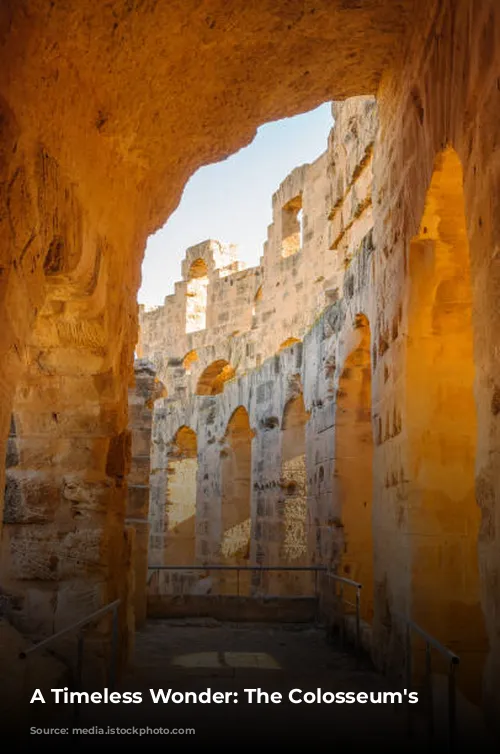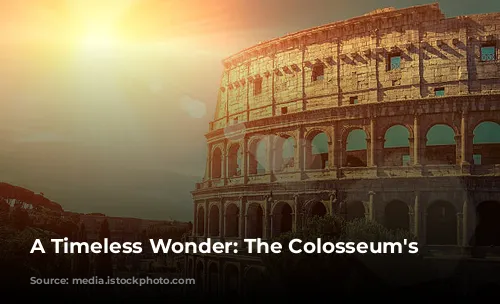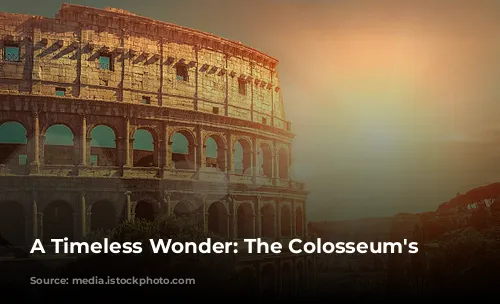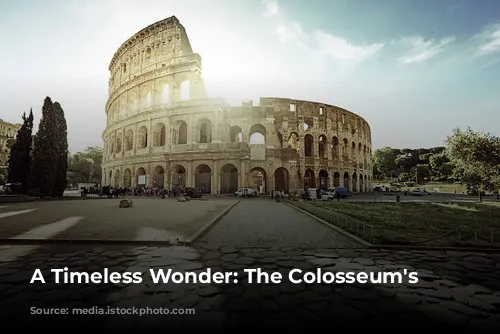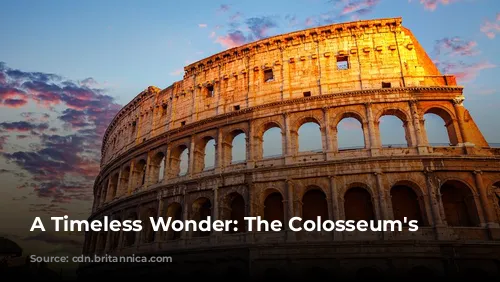The Colosseum, one of the most iconic symbols of ancient Rome, stands tall as a testament to the remarkable architectural and engineering prowess of the Roman Empire. Today, it is a beacon for tourists from around the world, generating a significant revenue stream for the Italian government. In fact, in 2018, the Colosseum, Roman Forum, and Palatine Hill together earned more than $63.3 million (€53.8 million), making it the highest-earning tourist attraction in Italy.
(This paragraph introduces the Colosseum, highlighting its historical significance, architectural marvel, and economic impact.)
From Arena to Fortress: The Colosseum’s Transformation
Sadly, the Colosseum’s fate took a turn for the worse after the fall of the Western Roman Empire. It fell into serious disrepair, with neglect and time taking their toll on the once-grand structure. During the 12th century, the arena was repurposed as a fortress by two powerful Roman families, the Frangipane and Annibaldi. This marked a significant shift from its original purpose as a center of entertainment. Later, in the late 15th century, Pope Alexander VI allowed the Colosseum to be used as a quarry, further contributing to its deterioration. It was only in the 1990s that state-funded restoration efforts began, marking a new chapter in the Colosseum’s long and storied history.
(This paragraph focuses on the Colosseum’s decline after the Roman Empire, highlighting its transformation from an arena to a fortress and then a quarry.)
A Symbol of Imperial Might: The Colosseum’s Purpose
The Colosseum was conceived as a symbol of imperial power and grandeur, built during the reign of the Flavian emperors, a period of rebuilding and resurgence for Rome. Emperor Vespasian, aiming to revitalize Rome after a turbulent period, envisioned the Colosseum as a venue for entertainment for the masses. Gladiatorial combat, animal hunts, and even mock naval battles were staged here, providing a captivating spectacle for Romans from all walks of life.
(This paragraph delves into the Colosseum’s origins and purpose, emphasizing the intention to create a grand entertainment center for the Roman people.)
A Monument of Labor: Building the Colosseum
Construction of the Colosseum, a mammoth undertaking, began under Vespasian between 70 and 72 CE. Its dedication in 80 CE by his son and successor, Titus, marked a significant milestone. Further additions, including the fourth story, were completed under Emperor Domitian in 82 CE. However, the Colosseum’s construction was not without controversy. It was funded by the spoils of war, specifically, the plunder from Titus’s sack of Jerusalem in 70 CE. Moreover, slaves from Judaea were forced to work on the construction project.
(This paragraph focuses on the construction process of the Colosseum, highlighting its dedication, the role of different emperors, and the controversial funding and labor practices.)
An Architectural Masterpiece: Unveiling the Colosseum
The Colosseum, also known as the Flavian Amphitheatre, is a remarkable structure, an ellipse made of stone, concrete, and tuff. It rises four stories high, measuring a staggering 620 by 513 feet (189 by 156 meters). This massive amphitheater could accommodate up to 50,000 spectators, making it one of the largest structures of its time. The Colosseum’s primary function was for gladiatorial combat, but its vastness also allowed for other forms of entertainment.
(This paragraph describes the Colosseum’s architectural features and dimensions, highlighting its capacity and primary use.)
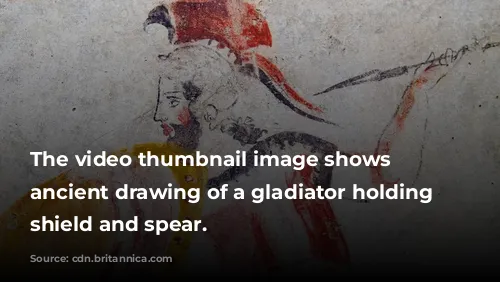
From Golden Lake to Public Arena: The Colosseum’s Site
Located just east of the Palatine Hill, the Colosseum stands on what was once the site of Nero’s opulent Golden House. The artificial lake, a central feature of the palace complex, was drained, paving the way for the construction of the Colosseum. This decision was both practical and symbolic, marking a shift from the excesses of a tyrannical emperor to a structure dedicated to public entertainment. Vespasian, who rose from humble beginnings to the throne, deliberately replaced Nero’s private lake with a public amphitheater that could host tens of thousands of Romans.
(This paragraph focuses on the site of the Colosseum, emphasizing the symbolic shift from Nero’s lavish private space to a public arena.)

Engineering Prowess: Building a Freestanding Marvel
Unlike earlier amphitheaters, which were often built into hillsides for added support, the Colosseum is a freestanding structure of stone and concrete. It utilizes a complex system of barrel vaults and groin vaults, creating a sturdy and impressive architectural feat. The Colosseum’s three main stories are encircled by arcades framed by columns, showcasing the Doric, Ionic, and Corinthian orders. This architectural arrangement, known as the assemblage of orders, would later influence Renaissance architects. The building materials for the Colosseum include travertine, tufa, and concrete, a testament to the Romans’ engineering ingenuity.
(This paragraph delves into the structural design and engineering techniques used in the construction of the Colosseum.)
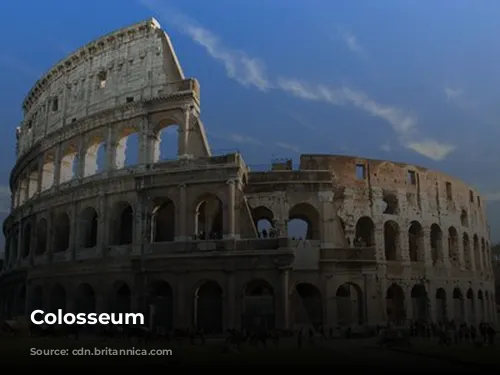
A Stage for Spectacle: The Colosseum’s Performances
The Colosseum was designed to provide a grand spectacle for its audience. It could seat 50,000 spectators, who were protected from the sun by a retractable awning, known as a velarium. The velarium was supported by masts extending from the top story, requiring hundreds of Roman sailors to operate its complex rigging. The Colosseum was the venue for countless gladiatorial combats, contests between men and animals, and even mock naval battles. Although the Colosseum’s role in the martyrdom of early Christians is debated, it was certainly a stage for some of the most thrilling and brutal spectacles of the Roman Empire.
(This paragraph explores the Colosseum’s use as an entertainment venue, highlighting the diverse performances and the role of the retractable awning.)
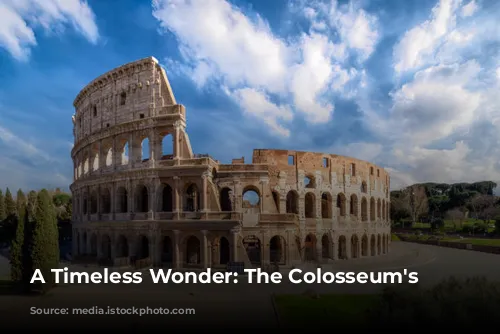
From Glory to Ruin and Back: The Colosseum’s Legacy
Through the centuries, the Colosseum’s fate has been intertwined with the rise and fall of empires. During medieval times, it served as a church and later, a fortress for the Frangipane and Annibaldi families. The Colosseum was subjected to damage from lightning, earthquakes, and vandalism. Its marble seats and decorative materials were removed, transforming it into a quarry for over a thousand years. However, the 19th century saw a resurgence of interest in preserving the Colosseum, spearheaded by Pope Pius VIII. In the 1990s, a major restoration project breathed new life into the ancient monument. Today, the Colosseum stands as one of Rome’s most beloved tourist attractions, welcoming millions of visitors each year.
(This paragraph chronicles the Colosseum’s journey from a grand arena to neglect and eventual restoration, highlighting its historical significance as a tourist destination.)
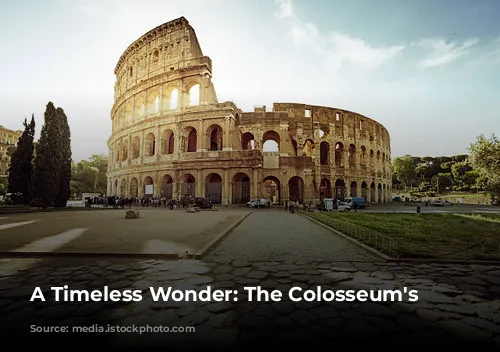
A Timeless Symbol: The Colosseum’s Enduring Impact
The Colosseum’s enduring legacy is a testament to the ingenuity and power of the Roman Empire. It has survived through wars, natural disasters, and centuries of neglect, emerging as a timeless symbol of history, culture, and architecture. As a monument to the past, it continues to captivate and inspire visitors from around the world, offering a glimpse into the grandeur and complexity of the Roman world. Its stories of gladiatorial combat, engineering marvels, and religious transformation continue to resonate, reminding us of the enduring impact of the Roman Empire on our world.
(This concluding paragraph emphasizes the Colosseum’s enduring legacy as a symbol of the Roman Empire and its influence on modern society.)
